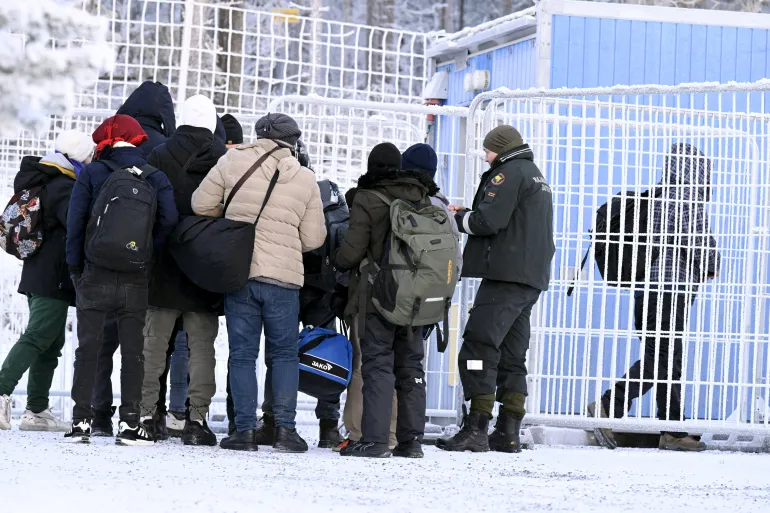Recently Finnish Prime Minister Petteri Orpo opted to temporarily shut down the complete 1,340-kilometer (830-mile) border between the two nations. The decision was prompted by earlier concerns – alleging that Moscow might be employing migrants as part of an alleged strategy of “hybrid warfare” to destabilize the Nordic country.
The authorities mentioned around a thousand migrants without visas or valid documentation have arrived at the border since August, with more than 900 in November alone. The migrants hail from countries including Afghanistan, Eritrea, Ethiopia, Iraq, Pakistan, Somalia, Syria and Yemen. Out of them a significant majority of individuals have applied for asylum in Finland once they reached the Finnish side on the border, authorities said.
With a mere 24 hours’ notice, authorities announced on Tuesday their decision to close Raja Jooseppi in Lapland, which is the last remaining border crossing point with Russia. The closure is scheduled for Wednesday night.
The Raja-Jooseppi crossing point in Finland’s Arctic Lapland region, situated approximately 155 miles from the northern Russian city of Murmansk, shut down at 2 pm on Wednesday, following the usual November schedule for checkpoints.
The recent escalation between Helsinki and Moscow marks a departure from decades of amicable relations between the neighboring countries. The strain on these ties arose in 2022 when Helsinki, in response to Moscow’s invasion of Ukraine that began in February 2022, opted to join NATO.
Consequently, Finland now plays a crucial role on NATO’s northeastern flank and serves as the European Union’s northern external border.
Furthermore, the Finnish Prime Minister said earlier this week that Finland had gathered intelligence indicating Russian authorities were helping asylum seekers reach the border and that, despite the closures, more people were heading across Russia towards Finland.
Furthermore, Jens Stoltenberg, the Secretary General of NATO, suggested in Brussels that Russia is employing migration as a tool to exert pressure on its neighbors.
He remarked: “I think this is another example of how Russia is using many different tools to put pressure on neighbor’s. We have seen them using energy, we have seen them using cyberattacks, we have seen them using different kinds of clandestine operations to try to undermine our democracies.”
Russia denies allegations that it is promoting the entry of migrants into Finland and expresses regret over the closure of Finnish borders. Maria Zakharova, the spokeswoman for the Russian Foreign Ministry, stated that on Wednesday, Finland officially informed Moscow of the closure of the last remaining northern border checkpoint.
Concerns over migrants’ rights
The choice to shut the borders persists, raising concerns about the legality of such closures and the potential repercussions on the well-being of asylum seekers in the face of harsh Arctic conditions with snow and extreme sub-zero temperatures. Numerous individuals arriving at the border lack adequate preparation for these challenging conditions.
Furthermore, the International Organization of Migration (IOM) has called on “both sides to uphold state obligations under international law and guarantee the safety, dignity, and protection of migrants’ rights.”
Additionally, it called for expanded and improved safe route “that can provide an alternative to resorting to smugglers and irregular migrants.”
Moreover, Annika Sandlund, the United Nations refugee agency’s representative to Nordic and Baltic nations, said that closing all border crossing points would be “contrary to international law.”
The myriad of complexities involves balancing national security, considering the population of 5.6 million, and addressing concerns related to human rights and migrants’ rights.
Despite these challenges, Orpo stated that legal counsel determined the closure of the border to be proportionate and justified under the current circumstances. The border guard agency observed a shift in Russia’s approach starting in August, with small numbers of individuals arriving at the Finnish border without the necessary documents for entry into the Schengen area.

